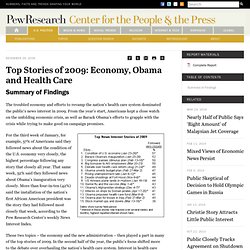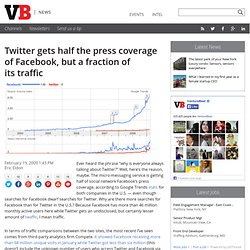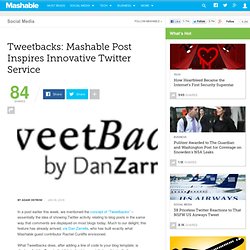

Stories of 2009: Public vs. Press. The troubled economy and efforts to revamp the nation’s health care system dominated the public’s news interest in 2009.

From the year’s start, Americans kept a close watch on the unfolding economic crisis, as well as Barack Obama’s efforts to grapple with the crisis while trying to make good on campaign promises. For the third week of January, for example, 57% of Americans said they followed news about the condition of the U.S. economy very closely, the highest percentage following any story that closely all year.
That same week, 52% said they followed news about Obama’s inauguration very closely. More than four-in-ten (42%) said the installation of the nation’s first African American president was the story they had followed most closely that week, according to the Pew Research Center’s weekly News Interest Index. Twitter gets half the press coverage of Facebook, but a fraction. Ever heard the phrase “why is everyone always talking about Twitter?”

Well, here’s the reason, maybe. The micro-messaging service is getting half of social network Facebook’s press coverage, according to Google Trends stats for both companies in the U.S. — even though searches for Facebook dwarf searches for Twitter. Why are there more searches for Facebook than for Twitter in the U.S.? Tweetbacks: Mashable Post Inspires Innovative Twitter Service. In a post earlier this week, we mentioned the concept of “Tweetbacks” – essentially the idea of showing Twitter activity relating to blog posts in the same way that comments are displayed on most blogs today.

Much to our delight, this feature has already arrived, via Dan Zarrella, who has built exactly what Mashable guest contributor Rachel Cunliffe envisioned. What Tweetbacks does, after adding a line of code to your blog template, is display all of the Tweets that link to that blog post. It does this by finding mentions of the URL on Twitter, accounting for the top 5 link shortening services like TinyURL and Bit.ly. The result is a listing of Tweets about your blog post that looks much like regular blog comments: